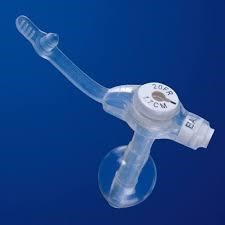A nurse is assisting with the plan of care for a group of clients. Which of the following clients should the nurse recommend for an Interprofessional conference?
A client who has a spinal cord injury
A client who has a torn rotator cuff
A client who has acute appendicitis
A client who has a urinary tract infection
The Correct Answer is A
Choice A Reason:
A client who has a spinal cord injury is correct. An interprofessional conference is often recommended for clients with complex and multifaceted health issues that require collaboration among various healthcare disciplines. A client with a spinal cord injury typically has complex care needs that involve multiple healthcare professionals, such as physical therapists, occupational therapists, social workers, nurses, and possibly surgeons or neurologists. The coordination of care for a client with a spinal cord injury often requires input and collaboration from various healthcare team members, making an interprofessional conference valuable.
Choice B Reason:
A torn rotator cuff may require physical therapy and orthopedic consultation but may not require the same level of multidisciplinary collaboration as a spinal cord injury.
Choice C Reason:
Acute appendicitis typically involves surgical intervention but may not require the same degree of ongoing interprofessional collaboration as other complex conditions.
Choice D Reason:
A urinary tract infection is a common and relatively straightforward condition that is usually managed by nurses and primary care providers without extensive interprofessional conferences.
Nursing Test Bank
Naxlex Comprehensive Predictor Exams
Related Questions
Correct Answer is C
Explanation
Effleurage is a massage technique commonly used during labor to provide comfort and relaxation. It involves using gentle, rhythmic stroking movements on the abdomen during contractions. This technique can help relieve tension, promote relaxation, and provide distraction from the intensity of the contractions.
Deep breathing techniques are often used during labor to promote relaxation and manage pain. However, this instruction does not specifically relate to effleurage.
Focusing on an object in the room, such as a focal point, can be a helpful technique during labor to redirect attention and manage pain. However, this instruction does not specifically relate to effleurage.
Applying pressure to the sacral area can help alleviate back pain during labor. However, this instruction describes the use of a tennis ball and is not specifically related to effleurage.
Correct Answer is D
Explanation
Choice A Reason:
A. Applying water-soluble lubricant to the site is not typically necessary for routine site care. It may be used during the initial insertion of the tube or when changing the tube, but it's not part of routine site care.
Choice B Reason:
B. Taping the tube to the child's cheek is not the recommended method for securing a gastrostomy tube. Securing the tube to the cheek may cause irritation or discomfort for the child and is not a secure method to prevent dislodgment.
Choice C Reason:
C. Attaching an extension tube to the site's opening prior to use may be necessary for feeding or medication administration, but it is not specific to site care. Site care primarily involves cleaning and inspecting the site and ensuring that the tube is secure.
Choice D Reason:
Securing the tubing to the child's abdomen is correct. When providing site care for a child with a gastrostomy enteral tube, it's essential to ensure that the tube is secured properly to prevent accidental dislodgment. Therefore, the nurse should secure the tubing to the child's abdomen using appropriate medical tape or a securement device.

Whether you are a student looking to ace your exams or a practicing nurse seeking to enhance your expertise , our nursing education contents will empower you with the confidence and competence to make a difference in the lives of patients and become a respected leader in the healthcare field.
Visit Naxlex, invest in your future and unlock endless possibilities with our unparalleled nursing education contents today
Report Wrong Answer on the Current Question
Do you disagree with the answer? If yes, what is your expected answer? Explain.
Kindly be descriptive with the issue you are facing.
